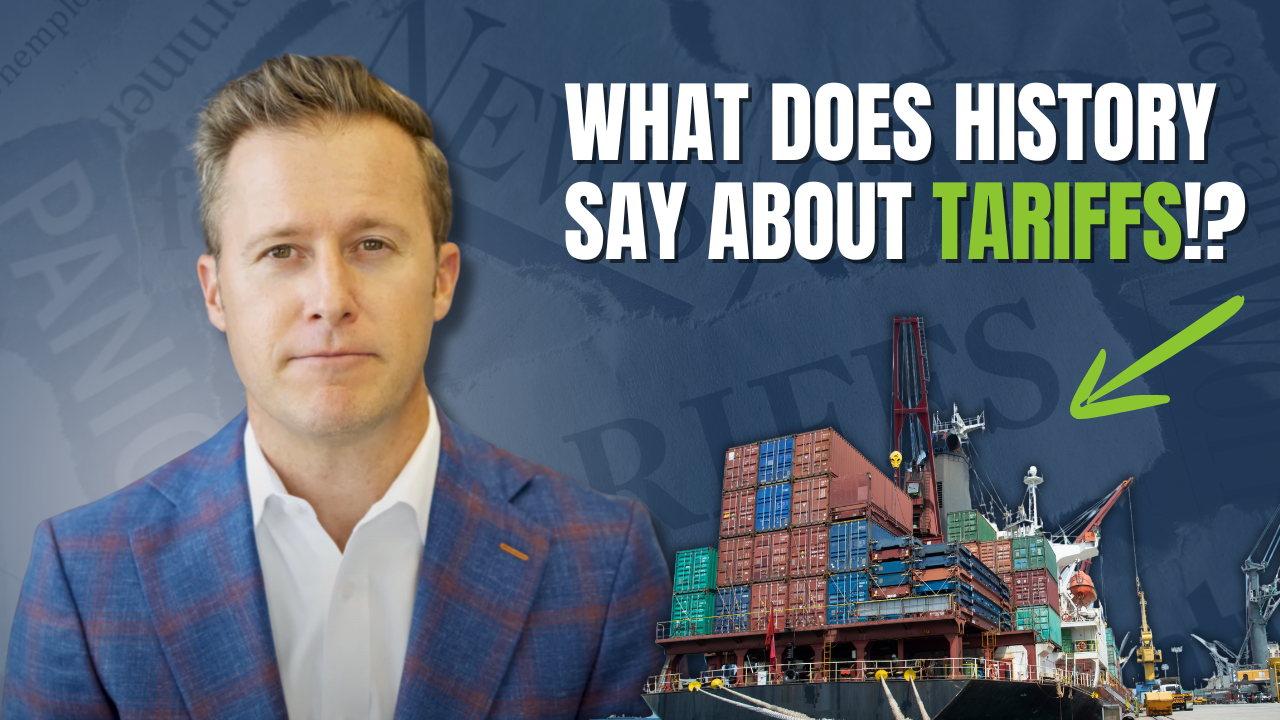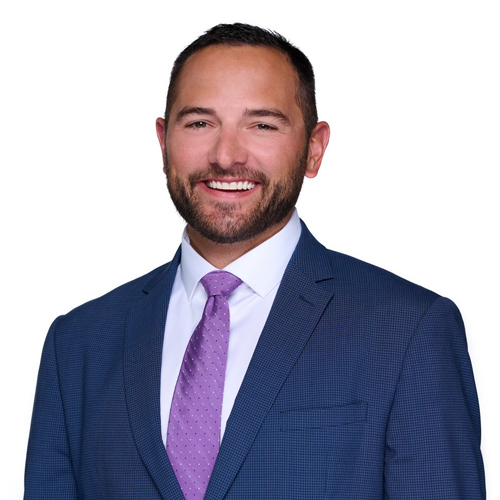We often joke that the only thing better than selling a business for a big profit is not having to share a huge slice with the IRS. As wealth advisors, we know how life-changing a liquidity event can be – and how important it is to keep as much of those gains as possible. This is where Qualified Small Business Stock (QSBS) comes in, potentially letting entrepreneurs exclude up to $10 million (or more) of gain from federal taxes 1. Yes, you read that right – up to eight figures of profit completely tax-free! Before you think this sounds too good to be true, let’s walk through what QSBS is, how it works, and how we can help maximize its benefits for business owners.
QSBS Basics: What Is It and Why Should We Care?
Qualified Small Business Stock (QSBS) refers to stock in certain small C-corporations that, if you meet a few key requirements, allows you to exclude 50%, 75%, or even 100% of the capital gains when you sell that stock. Under Section 1202 of the Internal Revenue Code (the law behind QSBS), for stock bought today, we get a 100% exclusion on qualifying gains 2. In plain English, that means no federal capital gains tax on those profits.
Considering the top long-term capital gains tax rate is about 23.8% (including the Net Investment Income Tax) 1, this exclusion can potentially translate into sizable tax savings. A penny saved is a penny earned, especially when those pennies add up to millions.
So, what’s the catch? To qualify for QSBS treatment, the stock must check a few boxes:
- Original Issue from a C-Corporation – The shares must be originally issued to you (not purchased second-hand), and the company must be a C-corp. Sorry, LLCs and S-Corps, this benefit is for the C-corps only. (This was probably Congress’s way of encouraging traditional corporate investment).
- Small Business Criteria – The corporation’s assets must be $50 million or less at the time the stock is issued 1. Don’t be fooled by the term “small” – a company can be valued well above $50M later; the limit is checked when you invest. Think of it this way: a startup that’s tiny when we invest can grow into a unicorn, and as long as it meets the <$50M asset test at purchase, those gains still qualify.
- Active Business Requirement – The company has to be an active trade or business. It can’t just be a holding of investments, and certain industries are excluded (like running a law firm, accounting practice, banking, insurance, investing, farming, or hospitality, to name a few disqualified fields). Basically, Congress wanted to reward innovative and operational businesses – tech, manufacturing, retail, etc. – not personal services or finance enterprises.
Five-Year Holding Period – Patience pays. You need to hold the stock for more than five years before selling to get the full exclusion 1 (If you sell earlier, no QSBS break – although there’s a separate provision, Section 1045, that lets you rollover gains into a new QSBS investment within 60 days to continue deferring tax4 If these conditions are met, Section 1202 allows you to avoid federal taxes on the greater of $10 million or 10× your original investment in that stock3. That phrase “greater of” is important. For example, if you poured $2 million into a qualifying startup, 10× that is $20 million – so you could potentially exclude up to $20M of gain (instead of the default $10M cap).
On the other hand, if you invested a smaller amount, you’re still entitled to up to $10M tax-free gain as a floor. Each investor in the company gets their own $10M limit, by the way. We’ve seen savvy entrepreneurs spread shares to family members or trusts – each eligible for their own $10M exclusion – effectively multiplying the tax break across the family. (Careful planning and legal guidance are a must for such strategies, of course.)In summary, QSBS is a powerful tax incentive for those of us investing in or founding small businesses. Now, to truly appreciate its impact, let’s travel back in time for a quick story about how QSBS came to be.
A Tax Break Born in the ’90s
It’s 1993. Jurassic Park is smashing box office records, Cheers has aired its final episode, and Congress, in a less glamorous move, enacts Section 1202 – the QSBS tax exemption – as part of the Omnibus Budget Reconciliation Act. The goal? Encourage investment in small businesses by offering a tax carrot to investors. But early QSBS wasn’t the blockbuster hit it is today. Back then, it only allowed a 50% exclusion, and even that came with strings attached.
The half of the gain that was still taxed faced a higher capital gains rate of 28%, meaning investors effectively paid a 14% tax on QSBS gains1(since 50% of the gain × 28% tax = 14%). Considering the regular capital gains tax rate in 1993 was 28% (dropping to 20% by 1998), QSBS initially saved just a few percentage points on taxes 1. Not exactly the kind of windfall that gets champagne popping.
Fast forward to the late 2000s: policymakers decided to give this tax break more teeth and in the aftermath of the Great Recession, the government supercharged QSBS. The Small Business Jobs Act of 2010 boosted the exclusion to 100% for stock acquired after September 27, 2010 1 – effectively making the federal tax rate zero on qualifying gains. This was temporary at first (a bit of a trial run), but it proved so popular that in 2015, the exclusion was made permanent under the PATH Act 1. QSBS had finally come into its own.
Case Study: QSBS in Action – How We Saved an Entrepreneur Millions
To illustrate just how powerful QSBS can be, let’s walk through a hypothetical (but realistic) success story. We’ll use a composite of scenarios we’ve seen with clients. Meet Sarah, a Sarasota-based entrepreneur who starts GreenTech Gadget Co. in 2015. With QSBS in mind, Sarah creates a C-Corporation from day one, ensuring that her company is structured to maximize potential tax benefits. She raises some seed funding, values the company well under $50 million (as you’d expect for a startup), and gets to work building her business. She holds all her founders’ shares personally (original issue stock – check!).
Over the next five years, the company grows steadily. Sarah’s initial stock investment of $500,000 (her hard-earned savings and sweat equity) expands as the company takes off. By 2021, GreenTech Gadget Co. is thriving, and a larger tech firm makes an offer to buy the company for $15 million.
The entire purchase is structured as a stock sale – meaning the buyer buys Sarah’s shares (a key detail, since selling the stock is what triggers QSBS; if the company had just sold its assets, that wouldn’t qualify). Sarah’s $15M exit results in a $14.5 million gain over her original $500K basis.
Now, let’s see the difference QSBS makes. Below is a simple graph of how Sarah’s investment grows over time, and then we’ll break down the tax outcome:
Sarah’s startup grows from a valuation of $0.5M in 2015 to $15M by 2021 (values shown in millions).
By year 2021, Sarah decides to sell her business for $15M. Thanks to QSBS, here’s what happens tax-wise:
- Without QSBS: A $14.5M long-term gain would ordinarily incur a federal capital gains tax of about $3.45 million (assuming the 23.8% top rate). That’s money that would go straight to the IRS.
- With QSBS: Since her stock qualifies (held >5 years, original issue, active business, etc.), Sarah can exclude up to $10 million of that gain from tax. That means only $4.5M of her $14.5M gain is subject to tax. She’d owe roughly $1.07 million in federal tax on the taxable portion, saving approximately $2.38 million in federal taxes compared to a fully taxable scenario.
The bar chart below illustrates Sarah’s federal tax bill with and without QSBS for her $15M sale:
Bar Chart: Comparing Sarah’s approximate federal tax bill on the sale with QSBS (green) vs without QSBS (black). QSBS saved her roughly $2.38 million in taxes, a reduction of about 69% in this scenario.
To further visualize the benefit, consider the breakdown of Sarah’s $14.5M gain. QSBS allowed $10M of it to be completely tax-free, while the remaining $4.5M was taxable. The pie chart below shows the proportion of tax-exempt gain vs. taxable gain:
Pie Chart: In Sarah’s case, $10M of her gain (green slice) is 100% tax-exempt under QSBS, and only $4.5M (black slice) is subject to tax. This illustrates how QSBS shields the bulk of the profit from taxes.
In the end, Sarah walks away with about $13.93 million net (before any state taxes, which Florida doesn’t have on income). Without QSBS, she would have netted around $11.55 million. That’s a life-changing difference. As advisors, we love sharing good news like this: “Congratulations, you just saved over two million dollars in taxes!” Just as a reminder though, always consult with a qualified tax professional before implementing any tax strategies.
Maximizing QSBS Benefits: Tips, Strategies, and Pitfalls
- Plan Your Entity Structure Thoughtfully: If you’re an entrepreneur with big dreams (and anticipating big gains down the road), consider the C-Corp route early. Yes, C-Corps can carry a current tax cost (21% corporate tax on profits), but if you don’t plan to take significant dividends and instead reinvest profits for growth (as many startups do), the corporate tax may be a minor trade-off. The 2017 tax law lowering the corporate tax rate from 35% to 21% has made this choice easier 5.
- Know the QSBS Qualifications (and Stay Within the Lines): To reiterate, keep that checklist handy – original issue C-corp stock, under $50M assets, active qualified business, five-year hold. If your business veers into an excluded activity (say you start offering financial advisory services within your tech company), be mindful – it could taint the QSBS status. Likewise, if you’re raising capital, be cautious not to blow past the $50M asset threshold too early. The good news is that the $50M test looks at the historical cost basis of assets, not post-money valuation 1. In practice, many startups can be worth $100M+ and still qualify because their balance sheet assets (cash, equipment, etc.) were below $50M when the shares were issued. Still, as advisors, we keep an eye on this when our clients raise multiple rounds of funding.
- Patience and Timing – The 5-Year Rule: Five years can feel like a long time, but when it comes to QSBS, patience can yield a tax-free pot of gold at the end of the rainbow. Consider timing any planned exits or liquidity events with that in mind. If an amazing offer comes at year 4, one strategy (if feasible) is to negotiate a longer-term earn-out or delay closing until you hit five years. Alternatively – and this is more advanced – you might use Section 1045 to roll over your sale into a new QSBS-qualified investment if you really must sell earlier. This defers the gain by essentially transferring it into another QSBS stock (you have to reinvest the proceeds in another QSBS within 60 days)4.
- Spreading the Wealth (Literally): The QSBS exclusion is per taxpayer, per company. If you co-found a business with a spouse or bring family members in as shareholders, each person potentially can exclude up to $10M of gain on their shares. Some founders plan to gift shares to children or a trust before a sale (mindful of gift tax, of course) to multiply the exclusions. This area gets into the weeds of estate planning, but it’s an intriguing strategy to maximize the overall family benefit. Always work with a qualified tax attorney or CPA on such moves – the IRS watches large exclusions carefully.
- Beware the Fine Print – No Promises, No Free Lunches: While QSBS is generous, it’s not automatic. Paperwork and proof matter. Be sure to keep records of when the stock was acquired (to prove the 5-year holding period and original issuance), what the company’s assets were at that time, and the business activities. Given the lack of extensive IRS guidance, it’s wise to be prepared to defend your QSBS claim if audited.
- State Taxes – Bonus or Bust: Our focus has been federal tax, but don’t forget state taxes. Florida residents like us don’t pay state income tax on capital gains, so QSBS’s 0% federal is the whole story here. But if you live in, say, California or New York, you’ll want to check your state’s stance. Many states do follow the federal QSBS rules (meaning they also give you a break), but some do not. For instance, California does not allow the QSBS exclusion after a certain court case, effectively taxing the gain normally. Others have partial conformity. Knowing this can influence whether you might consider relocating before a liquidity event (not uncommon for high-dollar exits).
Conclusion: Our Take on QSBS
At WealthGen Advisors, we believe in working smarter for our money – and that includes making the tax code work for you. By understanding the rules, planning early with the right business structure, and timing things right, you could save literally millions in taxes.
As always, every entrepreneur’s journey is unique. QSBS might be a perfect fit for one scenario and less so for another. The key is early planning and coordination with your financial, legal, and tax advisors. If you’re building a business and see a big payday in your future, let’s talk about whether QSBS could be part of your strategy. Just click the button below to arrange a consultation, and we look forward to discussing your plans and goals.
Further Reading
- https://www.columbialawreview.org/content/the-qualified-small-business-stock-exclusion-how-startup-shareholders-get-10-million-or-more-tax-free/
- https://www.irs.gov/pub/irs-wd/
- https://www.plantemoran.com/explore-our-thinking/insight/2021/08/the-section-1202-qualified-small-business-stock-gain-exclusion
- https://www.wsgr.com/a/web/jEca6UvTC4uhe6VgaQVpdf/section-1202-qualified-small-business-stock
- https://www.hklaw.com/en/insights/publications/2024/10/a-look-at-search-funds-and-section-1202-qualified-small-business-stock













